If you’ve been itching to get your hands in the soil, Spring is your moment. This month strikes the perfect balance, cool-weather crops are ready to thrive, and you can start heat-lovers indoors to get a jump on the growing season.
Whether you’re working with raised beds, a backyard plot, or a few pots on the patio, March offers more planting options than most people realize. With the right planning, you can extend your harvest, beat the heat, and even enjoy early-season veggies before summer fully kicks in.
In this guide, I’ll Walk you through 14 must-plant crops that seasoned gardeners (and smart beginners) are putting in the ground right now. Plus, I’ve gathered real tips from growers across zones, so you’ll know exactly what works where.
14 Crops to Plant This March!
Let’s dig into what to plant before the last frost catches you napping. You’ll be glad you started now.
1. Basil: The King of Herbs to Start Indoors
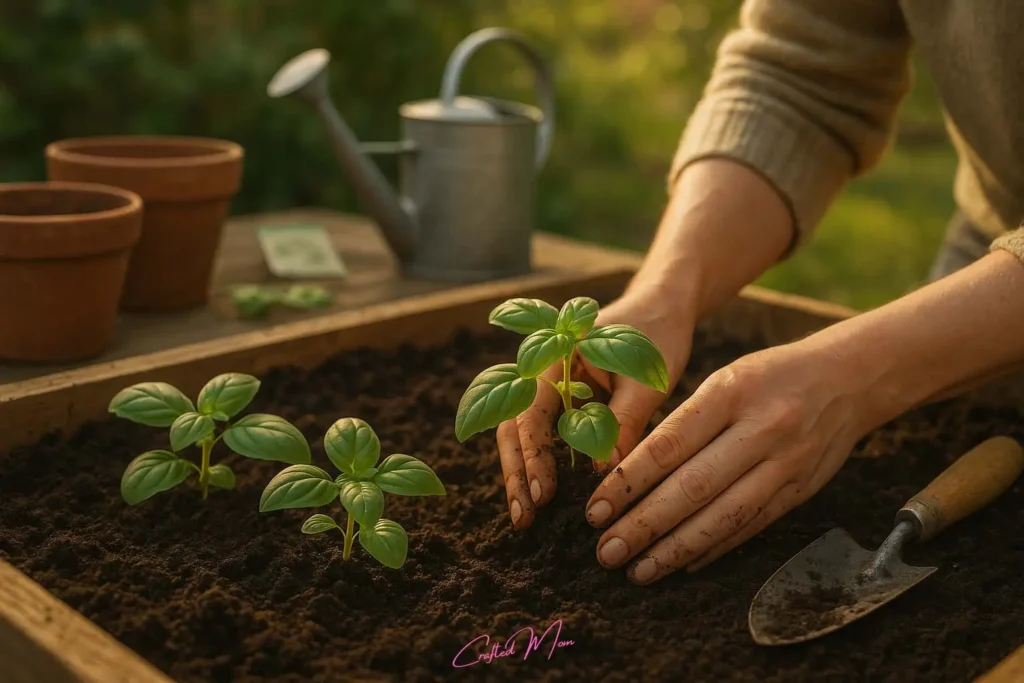
Basil isn’t just a garden staple, it’s the royalty of herbs. And if you want a season full of fresh, fragrant leaves for pesto, salads, and pasta night, March is the time to get it started.
Best Varieties to Try
- Italian Genovese: A classic for a reason, with bold, aromatic flavor
- Lettuce Leaf: Milder and sweeter, with giant leaves perfect for wraps and garnishes
Growing Tips
- Sow 2–3 seeds per cell in seed trays or small pots
- Plant about ¼ inch deep in light, well-draining seed-starting mix
- Keep them warm, 65–75°F is the sweet spot for germination
- You’ll see sprouts in 5–10 days, then keep them near a sunny window or under grow lights
- Start seeds about a month before your last frost date
Keynote: Start basil early indoors for a season-long harvest of fragrant, flavorful leaves.
2. Calendula: Beauty, Pollinators & Medicinal Uses

Calendula is one of those powerhouse plants that looks gorgeous, helps your garden attract pollinators, and pulls double-duty in your DIY skincare routine.
Why It’s a Must-Plant
- Blooms are bright, cheerful, and bee-magnetic, perfect for pollinator gardens
- The petals and sticky resin are packed with skin-soothing properties, often used in balms, salves, and herbal teas
- Grows quickly and thrives in early spring’s cool temps, March is the sweet spot
Top Variety to Grow
- ‘Resina’ Calendula: Bred specifically for high resin content, making it ideal for medicinal use
- You can also harvest the flowers to dry and store for months
Keynote: Calendula is a triple threat, beautiful, beneficial for bees, and great for your skin.
3. Cucumbers: Perfect for Pickling Lovers
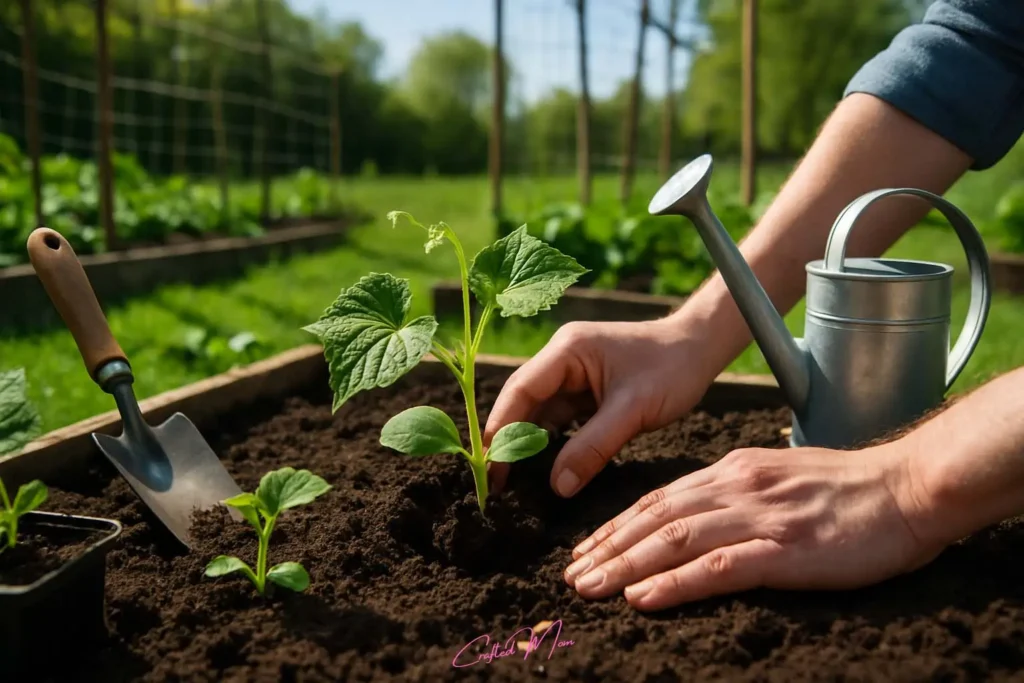
If crunchy pickles or fresh cucumber slices are your thing, March is a great time to get these vigorous growers started, especially in warmer climates like Florida, Texas, and the Deep South.
Ideal for Warm Climates
- Go for thin-skinned, parthenocarpic varieties like ‘Double Yield’ or ‘Bush Champion’, they don’t need pollination to fruit
- These varieties also do well in greenhouses or hoop houses
- Trellising helps them stay disease-free and easier to harvest
Smart Planting Strategy
- Succession sow every 2 weeks starting in March to keep the cukes coming
- Trellis vertically to save space and improve airflow (and honestly, they just look amazing climbing a trellis)
Keynote: Cucumbers grow fast and fade fast, succession sowing ensures nonstop pickles.
4. Celery: The Cut-and-Come-Again Veggie
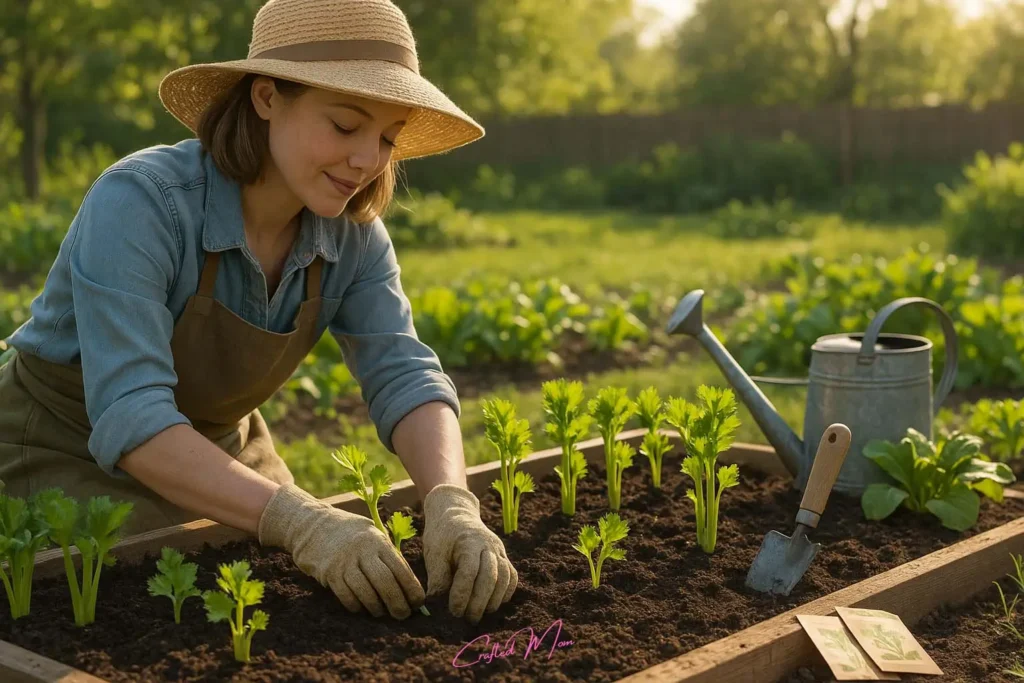
Celery might not be the flashiest crop, but once you’ve tasted the flavor of homegrown stalks, you’ll never go back to store-bought. And March is a great time to start it indoors for a long, flavorful harvest season.
Recommended Varieties
- Morango: A fast-maturing variety perfect for impatient growers
- Utah: A dependable classic that thrives in cooler climates and delivers long, crisp stalks
Growing Advice
- Be patient! Celery takes its time to germinate, 10 to 30 days is totally normal
- Needs light exposure to germinate well, don’t bury seeds too deep
- Start seeds indoors in March and transplant once temps warm up (after last frost)
- Once mature, you can harvest outer stalks as needed, and the plant will keep producing
Keynote: Snap off stalks as needed, homegrown celery adds flavor and freshness to any dish.
5. Broccoli: Frost-Tolerant & Freezer-Friendly
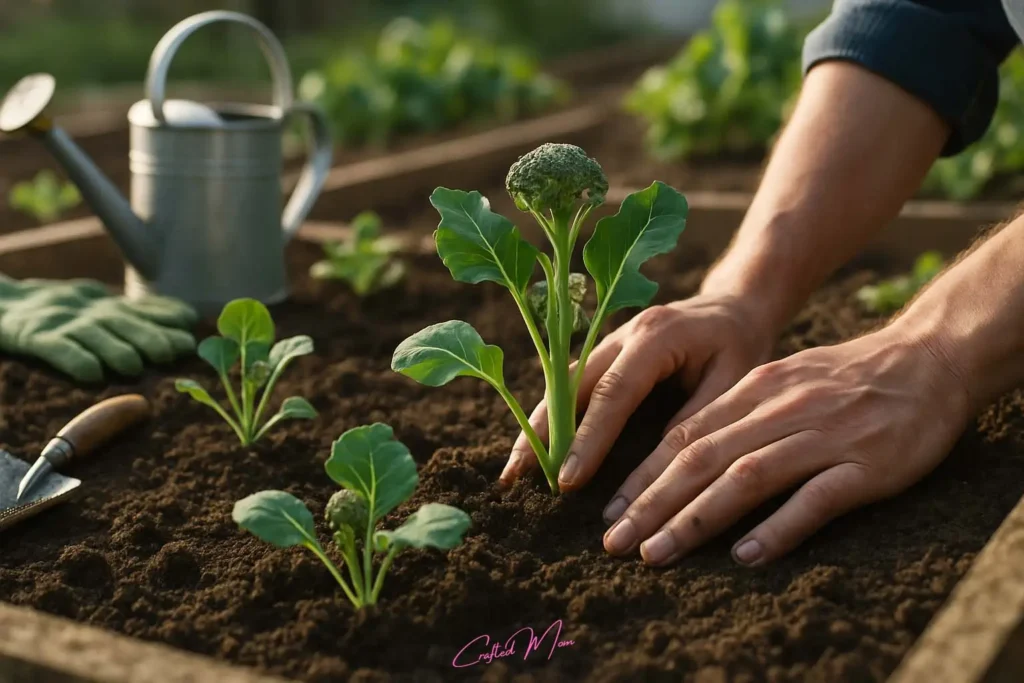
If you’re gardening in a cooler zone or have a short spring season, broccoli is a no-brainer. It thrives in March’s crisp air and rewards you with nutrient-rich heads you can enjoy fresh or freeze for months.
Ideal for Short Growing Seasons
- Choose ‘Bellstar F1’ for reliable yields and large, tight heads
- Perfect for northern zones like Minnesota, Wisconsin, or upstate New York
- Can handle light frosts, making it ideal for early-spring planting
Start Indoors for Best Results
- Sow seeds 6 weeks before your transplant date, late March is ideal for many regions
- Broccoli loves cool temps, so aim to transplant outside once your soil reaches around 50°F
Pro tip: Harvest the main head early and you’ll often get bonus side shoots in the weeks that follow!
Keynote: Broccoli thrives in spring’s cool temps and freezes beautifully for long-term use.
6. Peppers: Colorful, Spicy, and Surprisingly Hardy
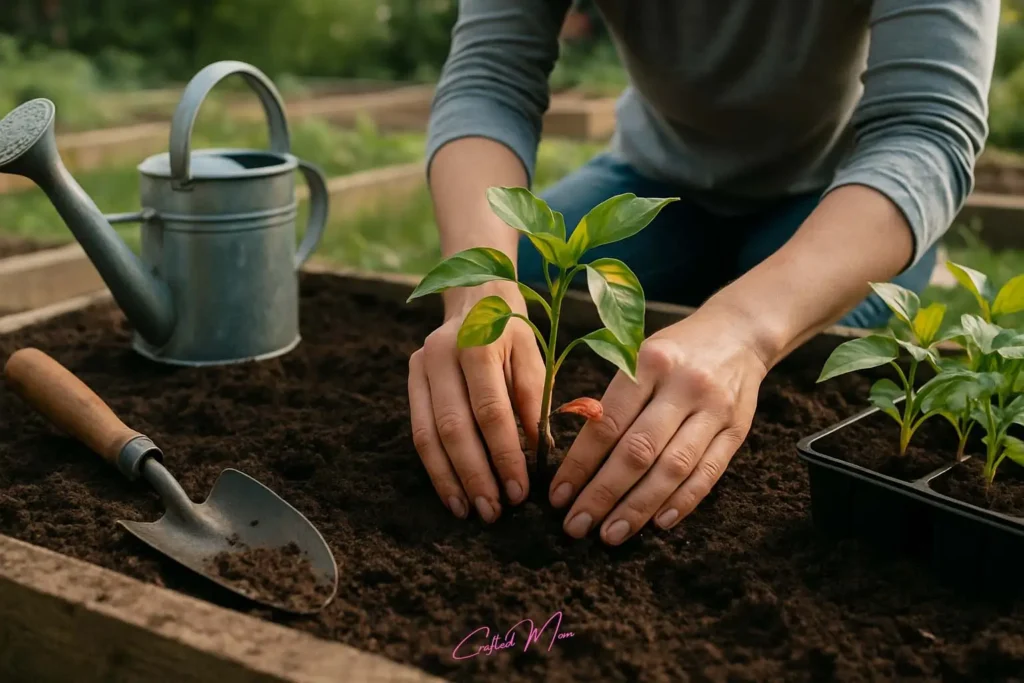
Whether you love them sweet, smoky, or with a serious kick, peppers are a garden MVP. Starting them in March gives them the time they need to produce vibrant fruits all summer long.
Varieties to Try
- Orange Sun: A stunning sweet bell pepper with rich flavor and bright color
- Megatron: A giant jalapeño variety that’s great for stuffing or grilling
- Biquinho Red & Yellow: Small, sweet-and-spicy Brazilian peppers perfect for pickling
Planting Notes
- Peppers need a head start: start seeds indoors in March
- Keep the soil warm: around 70°F for best germination
- Use one seed per cell: pepper seeds are slower to germinate and deserve their own space
- Once sprouted, give them plenty of light and pot them up before transplanting outdoors
Keynote: Start peppers early to enjoy unique colors, flavors, and heat in your summer garden.
7. Mint: Easy to Grow but Best in Containers
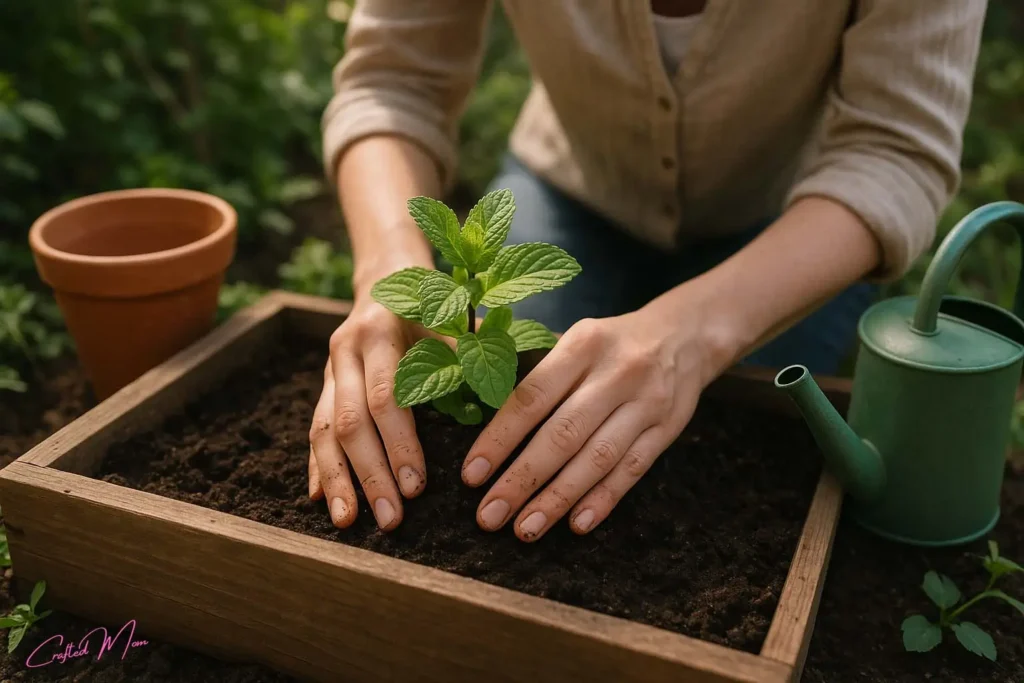
Mint is refreshingly easy to grow, but let’s be honest, it’s a bit of a wild child in the garden. Plant it in containers unless you want it taking over your raised beds like an herbal invader.
Tips for Planting
- Always use containers (even sunken pots in garden beds) to keep it from spreading uncontrollably
- Sow seeds densely and keep soil consistently moist
- Mint thrives in partial shade or full sun and can grow indoors year-round on a sunny windowsill
Uses in the Kitchen & Beyond
- Add fresh mint to desserts, iced teas, and fruit salads
- Wrap in rice paper with fruits or herbs for a refreshing summer snack
- Acts as a natural digestive aid, steep it into calming herbal tea
Keynote: Mint spreads fast, grow it in containers and enjoy year-round fresh leaves.
8. Melons: Early Starters for Hot Climates
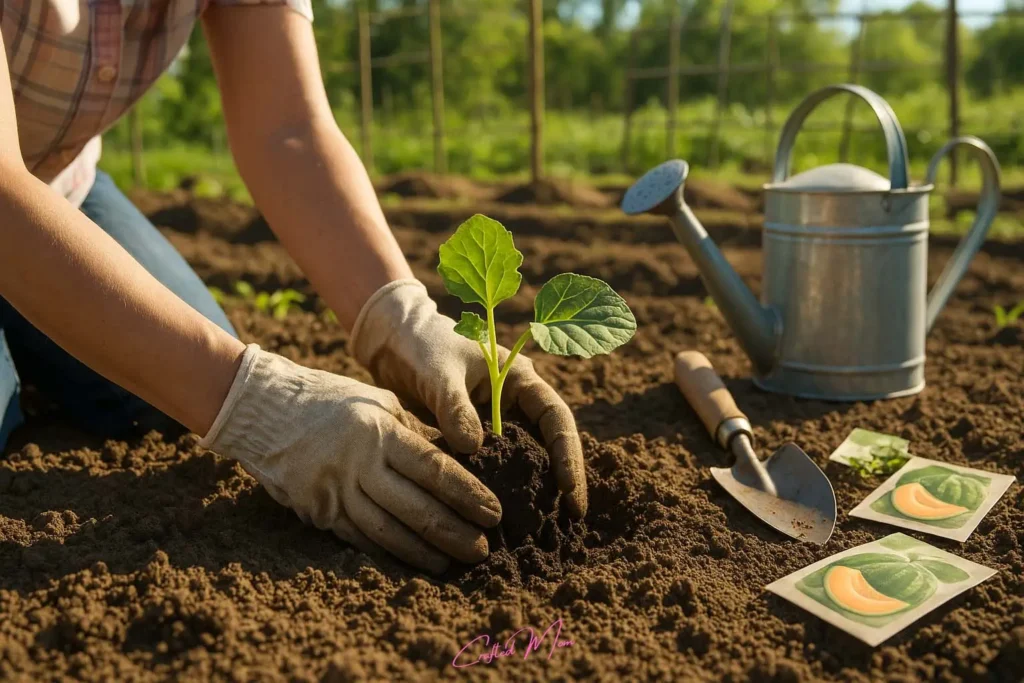
Melons love heat, but starting them early in March gives you a head start, especially if you’re in warm zones like Florida, Texas, or Southern California. Choose early-maturing varieties to outpace pests and get that sweet harvest before summer stress kicks in.
Best Types to Plant in March
- Apple Melon: Crisp, slightly tangy, and great for snacking
- Asian Melons: Thin-skinned, lightly sweet, and quick to mature
- Charentais: A fragrant, French-style cantaloupe with rich orange flesh
Pro Tip
- Wait to transplant until after your last frost date
- Focus on fast-maturing, disease-resistant types
- Use row covers early on to protect young plants from cucumber beetles and vine borers
- Give them full sun, lots of water, and room to sprawl or climb
Keynote: For juicy, sweet melons, start early and go for fast-growing, disease-resistant varieties.
9. Eggplant: Heat-Loving and Versatile
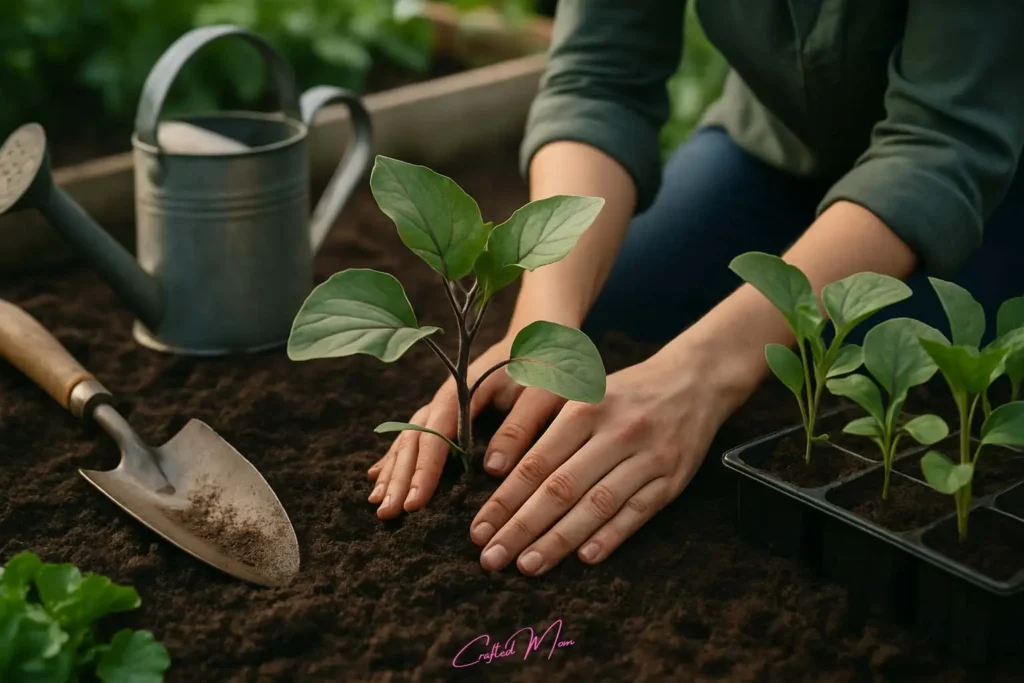
Eggplant is the diva of the garden, it needs warmth, attention, and a little time. But treat it right, and it’ll reward you with beautiful, glossy fruits perfect for grilling, roasting, or layering in a killer eggplant Parmesan.
Top Varieties to Try
- Jewel: Compact and ideal for containers or small raised beds
- Long Purple: Thin-skinned, Asian-style variety with a mild, tender bite
- Black Beauty: The classic heirloom with thick flesh and bold flavor
Starting Tips
- Eggplant seeds love heat, start indoors in March using a heat mat or warm window
- Germination can take 10–14 days, so be patient
- Transplant outside only once nights stay above 55°F
- Prefers full sun, rich soil, and regular watering
Keynote: Treat eggplant like royalty, give it heat and patience for rich, delicious rewards.
10. Cabbage: Cool-Loving & Fermentation-Ready
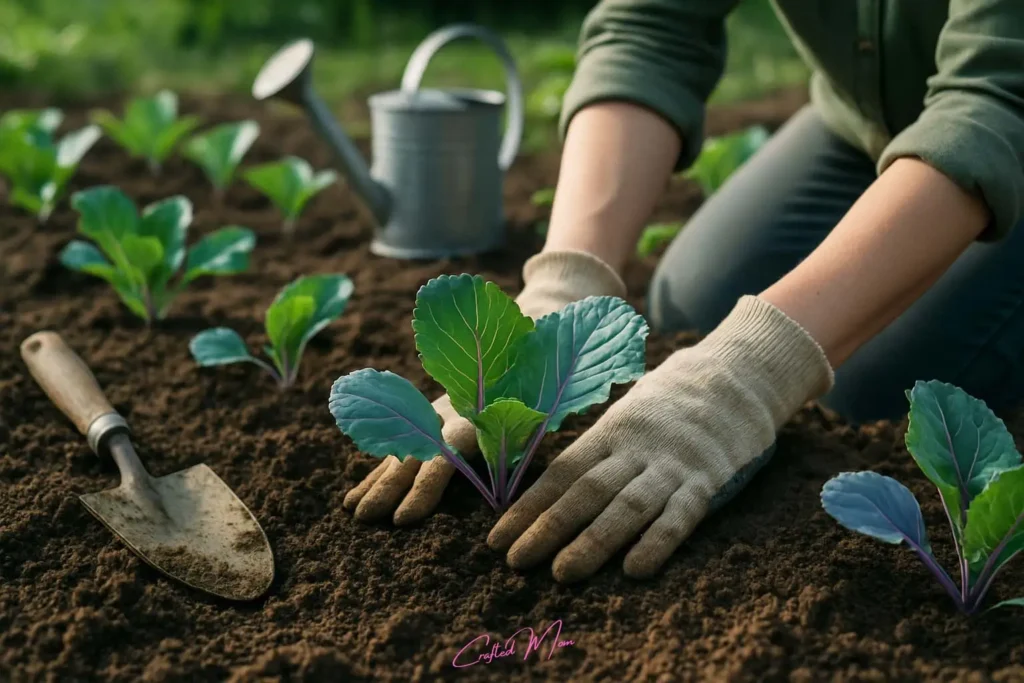
Cabbage is a spring superstar, cold-hardy, nutrient-dense, and super versatile in the kitchen. Whether you enjoy it fresh in slaws or fermented into gut-healthy kraut, March is a great time to start this leafy legend.
Featured Variety
- Pact F1 – Produces massive, dense heads with sweet, crisp leaves
- Ideal for fresh eating, steaming, and fermenting, a favorite among homesteaders and foodies
Ideal Planting Tips
- Start seeds 6 weeks before transplanting, so March is right on schedule
- Loves cool temps, making it perfect for northern zones and early planting
- Transplant when seedlings are strong and the soil is workable
- Space generously, cabbage heads need room to form and breathe
Keynote: Cabbage is cold-hardy and gut-healthy, perfect for fresh use or kraut.
11. Strawberries: Compact, Sweet, and Ideal for Containers

Few things are more satisfying than picking fresh, sun-warmed strawberries right from your garden, or even your porch! Strawberries are perfect for March planting in many regions and grow beautifully in containers, hanging baskets, or small garden beds.
Types to Grow
- June-Bearing: One large, flavorful crop in early summer
- Everbearing: Two to three harvests per season, perfect for regular snacking
- Day-Neutral: Produces berries continuously, especially in cooler temps
- Alpine: Grown from seed; produces tiny, intensely sweet berries
Container Friendly
- Excellent for small gardens, patios, balconies, and raised beds
- Use deep pots or hanging planters to let runners spill over the sides
- Keep soil moist and rich in compost for best production
Keynote: Strawberries are space-saving powerhouses, grow them for a sweet harvest all season.
12. Native Flowers: Easy and Resilient Pollinator Magnets
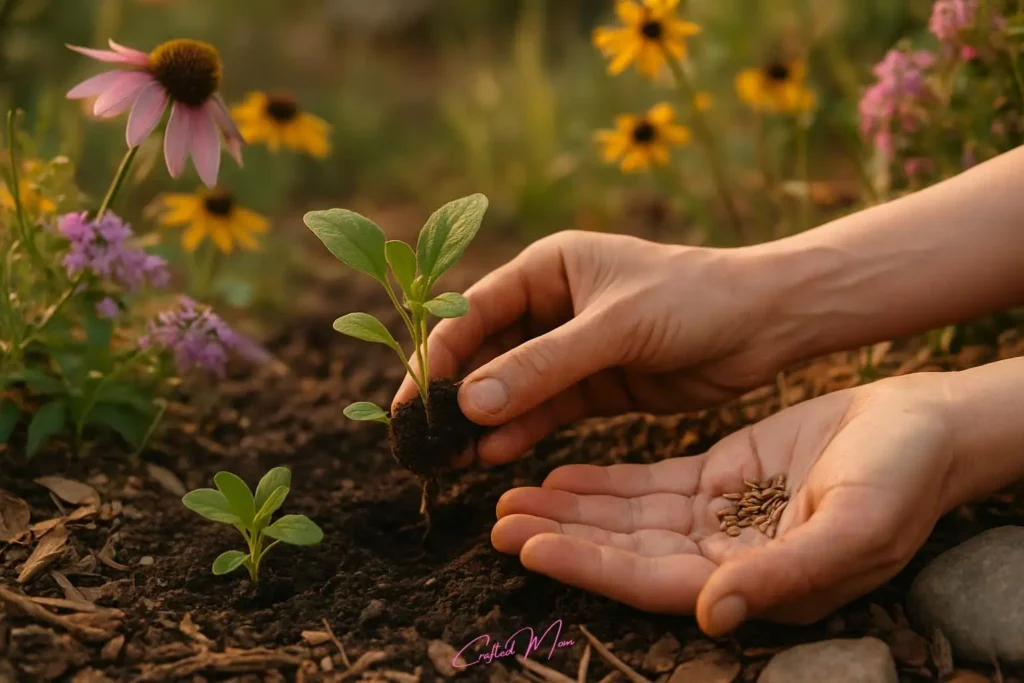
If you want low-maintenance color and buzzing pollinators without the fuss, native flowers are a no-brainer. These beauties are adapted to your local soil and climate, which means they thrive where other plants struggle.
Top Pick: California Poppy
- Thrives in poor, dry soil, no need to amend or overthink it
- Simply scatter-sow on disturbed ground and let nature take over
- Germinates easily in early spring and blooms fast with minimal care
Bonus: They self-seed, so you may see them pop up again next year!
Why Gardeners Love Them
- Attracts bees, butterflies, and other essential pollinators
- Adds pops of orange, yellow, and red to your early spring beds
- Works great along walkways, borders, or rocky garden patches
Keynote: Native flowers grow where others won’t, easy, beautiful, and pollinator-friendly.
13. Okra: The Low-Maintenance Southern Superstar
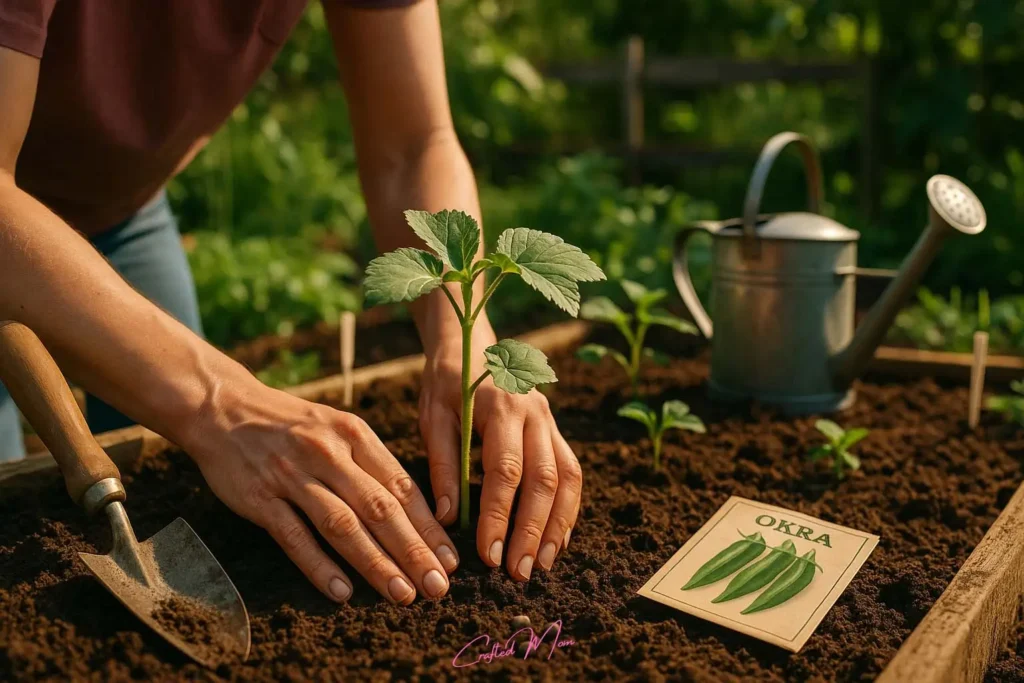
If you live in a warm, humid climate and want a crop that practically grows itself, okra is your best friend. It’s tough, heat-loving, and highly productive, ideal for beginner gardeners or anyone who forgets to water now and then.
Why Grow Okra
- Thrives in hot, humid conditions, making it perfect for southern states like Georgia, Louisiana, and Florida
- Loaded with vitamins A and C, fiber, and compounds that support digestion
- Produces all summer long with very little effort once established
Harvesting Tip
- Pick pods while they’re still small and tender (2–4 inches long)
- Do the “snap test”, if the tip doesn’t snap cleanly, it’s too woody
- Frequent harvesting encourages the plant to keep producing
Keynote: Okra grows like a champ even with neglect, and is packed with health benefits.
14. Tomatoes: The Crown Jewel of Any Garden
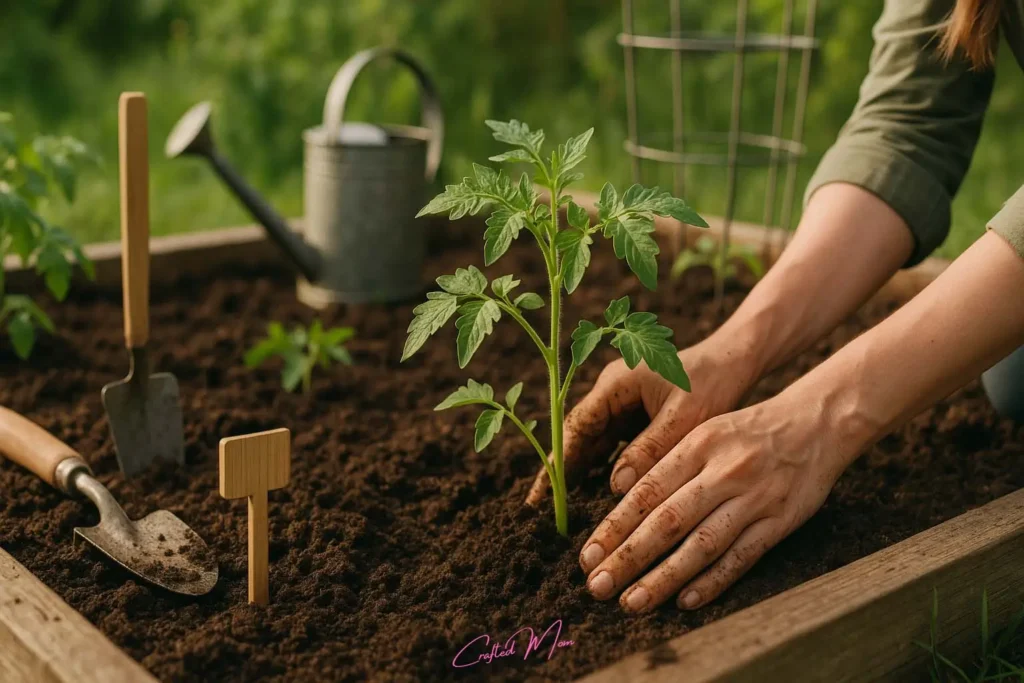
No garden feels complete without a few thriving tomato plants. Whether you’re whipping up sauce, layering sandwiches, or snacking straight from the vine, tomatoes are the undisputed stars of the summer harvest, and March is prime time to start them indoors. And if you find yourself with green tomatoes that aren’t quite ready, here’s how to ripen green tomatoes in just 7 days to make the most of your harvest.
Must-Have Varieties
- San Marzano: Rich, meaty, and perfect for homemade sauces and canning
- Brandywine: A juicy, heirloom slicer with legendary flavor
- Artisan Bumblebee Blend: Vibrant cherry tomatoes that are sweet, striped, and snackable
Starting Tips
- Start seeds 4–8 weeks before your last frost date, so March is your window
- Use high-quality seed trays, keep temps around 70–75°F, and use a grow light or sunny window
- Transplant after danger of frost has passed and soil has warmed
Mix and match varieties to cover every tomato craving from sauces to salads.
Keynote: For the best tomatoes, start early and grow a mix of sauce, slicers, and snacking types.
Final Thoughts: Get a Head Start This March
March is that sweet spot for gardeners, the days are getting longer, the soil’s starting to wake up, and the seed trays are calling your name. Whether you’ve got a full backyard garden or just a few sunny windowsills, now is the time to start planting.
Here’s the game plan:
- Cool-weather crops like broccoli, cabbage, and celery thrive when planted early
- Warm-season favorites like tomatoes, peppers, and melons need that early indoor start to shine later
- Use seed trays, heat mats, and grow lights to give your plants the best possible head start
- And remember, you don’t have to plant everything. Start small but smart with high-yield, beginner-friendly crops that fit your space and climate. Your future self (and your dinner table) will thank you come harvest time.
What’s in your seed tray this March?
We’d love to hear what you’re planting, drop a comment and share your favorites with fellow growers!
Frequently Asked Questions:
When is the best time to start planting spring crops?
Cool-season crops should be planted as soon as the soil is workable in early spring, while warm-season crops should be planted after the last frost.
Which vegetables are easiest to grow in spring?
Lettuce, spinach, radishes, carrots, peas, beets, kale, and Swiss chard are the easiest to grow in spring.
How can I prevent my spring crops from bolting?
Plant early in cool temperatures, maintain consistent moisture, use mulch, and choose bolt-resistant varieties.

